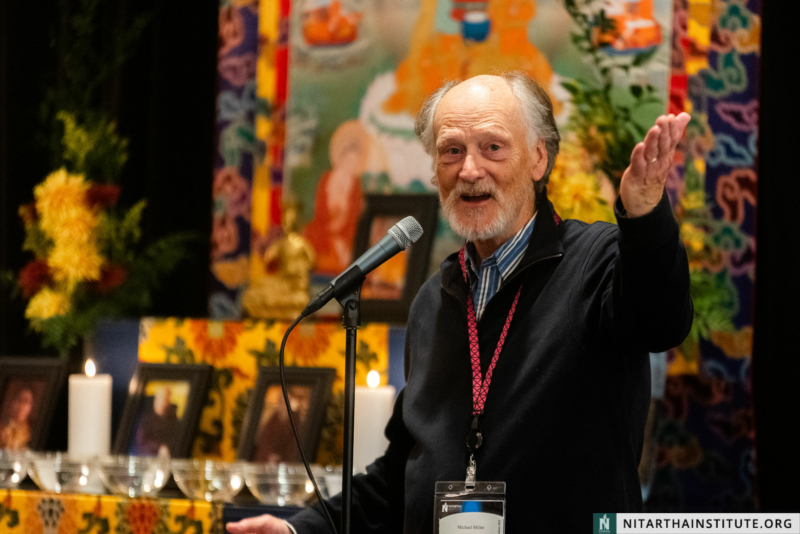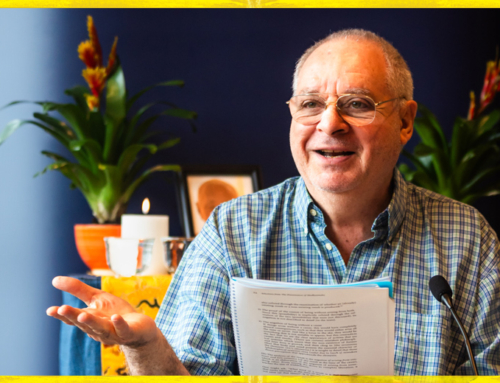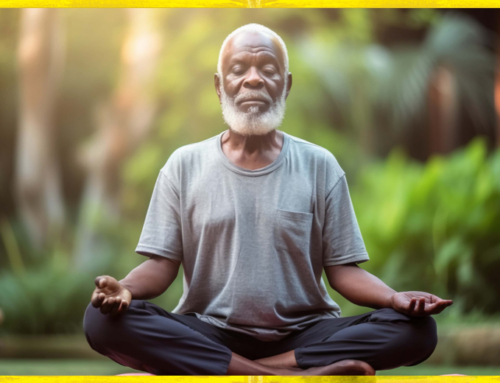Key Qualities of Mahamudra Meditation
Written by Michael Miller
Nitartha CFO
Nalandabodhi Karunika and Practice Instructor
 As we embark on our journey through the Mahamudra practices, it is important to note the differences between Mahamudra meditation and simple shamatha. The differences are subtle but profound, and we can miss the point entirely if we do not know them.
As we embark on our journey through the Mahamudra practices, it is important to note the differences between Mahamudra meditation and simple shamatha. The differences are subtle but profound, and we can miss the point entirely if we do not know them.
First, renunciation or revulsion is important. We need to develop some sense of giving in, some sense of renunciation. This does not mean going off to a cave and giving up all our worldly possessions. But it does mean that we must be willing to give up our fixed concepts about ourselves and the world that we inhabit, and largely create. There may even be weariness with our current state of mind.
When we meditate, we are taking an important break from our normal routines. This is true with whatever kind of meditation we do. It is imperative to put on hold all our conceptual deliberations. During the meditation period, we make a commitment to train our minds to focus on some reference object. It may be the breath or a visual object or a visualization, but then because of this commitment, when we find ourselves spinning some elaborate scenario, we give it up, drop it on the spot, and go back to the reference object. Without this commitment to give up our thoughts or some sense of renunciation of our mental elaborations, there is no meditation, and no transformation.
Second, we experience a state of awareness and relaxation, where the nature of mind is the underlying reference point. In Mahamudra meditation, while we use various reference objects to train the mind, the actual underlying reference point is the nature of the mind itself. By using these reference objects, we can rest the mind in this nature, which is spacious and without groundedness. Going from a grounded state in which there is a reference point to an ungrounded state is not easy at first, but it is a natural progression. We simply do these things: give up our thoughts, look at the resulting state, and rest in that. We will then find ourselves in a state of awareness and un-distractedness.
This awareness is not merely a blank state. If this state is truly the basis of our mental phenomena, then it must contain all the richness of the mental phenomena that human beings experience – emotions, compassion, openness. And since we are not dwelling on our own welfare by constantly entertaining concepts about ourselves, openness and compassion can naturally arise.
Third, it is important to have a model for this richness, an example of a person who actually manifests these qualities. That is the teacher. It could be any teacher that inspires us with compassion, courage, and service to others. By seeing those qualities in a teacher, we can often feel a sense of devotion arising in our minds. In addition, it is easiest when we have a personal experience of a person of this type because the communication between teacher and student can be expressed in ways that transcend words alone.
It is for this reason that Mahamudra meditation begins with what is called guru yoga. We invoke the vision of the teacher, the teacher’s qualities, and the lineage of teachers that came before. That can trigger the naturally inherent and bright qualities of our own mind — compassion and light— along with the spaciousness and openness of the meditation itself. This is the natural state of mind.
In many Mahamudra sessions, we commonly recite the Kagyu Lineage Supplication at the beginning of a session. And these qualities are exactly what the Kagyu lineage supplication reveals:
- Revulsion is the foot of meditation…
- Awareness is the body of meditation…
- Devotion is the head of meditation…
When these three qualities are included in our meditation, then we can truly call it Mahamudra meditation.
Which leads us to the subtle secret of all human thought —
The nature of thoughts is dharmakaya…
The true nature of mind is the mind of the Buddha himself —
 spacious,
spacious,
luminous,
compassionate, and
free of the endless cycle of samsara,
right from the beginning.
Join us in July for Mahamudra Meditation at the 2024 Summer Institute and join Mahamudra and study.
This year’s Summer Institute will be held at Lewis & Clark College in Portland, Oregon and online.





